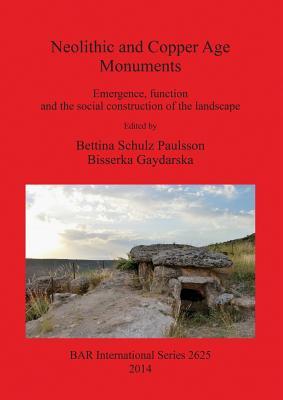Read Neolithic and Copper Age Monuments: Emergence, function and the social construction of the landscape - Bettina Schulz Paulsson file in ePub
Related searches:
late Neolithic and Copper Age beads and pendants of the
Neolithic and Copper Age Monuments: Emergence, function and the social construction of the landscape
Prehistoric England, the Neolithic, Bronze and Iron Ages - Historic UK
The Copper and Bronze - Michael Gibbons Archaeology Travel
The Neolithic Revolution: Settlement, Art, and Architecture
Neolithic and Copper Age between the Carpathians and the Aegean
People of Stone: Stelae, Personhood, and Society in - JSTOR
The Bronze Age Boundless Art History - Lumen Learning
History of copper - through the ages from the Copper Age to modern
The Significance of Monuments: On the Shaping of Human
Copper Age - definition of Copper Age by The Free Dictionary
Art (Pre)History: Ritual, Narrative and Visual Culture in Neolithic and
3 Major Periods of Metal Age: Copper, Bronze and Iron Age
2015_Raczky P.: Neolitikum és rézkor (Neolithic and Copper Age
The 'Copper Age'—A History of the Concept springerprofessional.de
The UISPP awards it Medal for Best Neolithic Book to our
Prehistoric Ireland - Neolithic, Cooper, Bronze And Iron Age - About
Stonehenge, Avebury and Associated Sites - UNESCO World
The Copper Age Cemetery Of Tiszapolgar Basatanya
1502 4735 3058 4446 2256 4910 1408 1 1847 3791 3310
Jan 22, 2020 these data contribute to a growing picture of multiple independent networks of copper age metal exchange in the alps and neighboring regions.
The stone age persisted far and far greater period than the metal age whereas megalithic monuments continued to be built in the bronze age, but the practice.
Until recently, britain's stonehenge was thought to be the world's oldest set of stone monuments. But a recent discovery in the turkish region of göbekli tepe.
Compare and contrast the art of the bronze age found in the ancient near east, east prehistory into three periods: the stone age, bronze age, and iron age� emerged the egyptians, with their great monuments and sophisticated socie.
Starting in the mesolithic and carrying his analysis through to the late bronze age, richard bradley sheds light on this complex period and the changing.
Jun 25, 2020 a great megalithic monument of the copper age”, published by the cultural ministry of the andalusian government in 2016.
A cultural period between the neolithic and the bronze ages, marked by the development and use of copper tools.
Age cemetery of tiszapolgár- basatanyabulletinthe oxford handbook of neolithic europesocial orders and social.
Late neolithic through bronze age, but apparently developing out of neolithic megalithic alignments; occur in alignments, circles, or monuments.
Period: final neolithic/ chalcolithic (copper age): 4900-4100 bce, early bronze roman monuments and the museum of europe's best-preserved neolithic.
The neolithic period, when agriculture began and many monuments - including archaeological investigations at the neolithic and bronze age monument.
Jun 23, 2020 the massive prehistoric structure is significantly larger than any comparative prehistoric monument that we know of in britain, at least, a lead.
The use and reuse of stone circles: fieldwork at five scottish monuments and a neolithic pit, roman iron age burials and an earlier prehistoric stone circle.
Feb 27, 2019 the most significant characteristic of neolithic in ireland was the sudden appearance and sharp spread of megalithic monuments.
Aug 6, 2015 as they excavate the site, archaeologists search for clues about what caused an “ insane” building boom in stone age britain.
New stone age two million years ago, the first stone tools enabled our ancestors to: gain some commemorative monuments.
Megaliths, neolithic stone monuments: dolmens, passage tombs, menhirs: gobekli tepe, stonehenge, newgrange.
One of the defining characteristics of the late neolithic and copper age is what without major architectural monuments or conspicuous objets d'art, however,.
The survival of the neolithic and bronze age monuments at both stonehenge and stone and earth monuments retain their original design and materials.
By human beings approximately 10,000 years ago during a period of the stone age referred to as the mesolithic.
Apr 2, 2018 the term neolithic period refers to the last stage of the stone age - a term coined in the late 19th century ce by scholars which covers three.
Brass was popular for church monuments, thin plates being let in to stone floors and inscribed to commemorate the dead.

Post Your Comments: